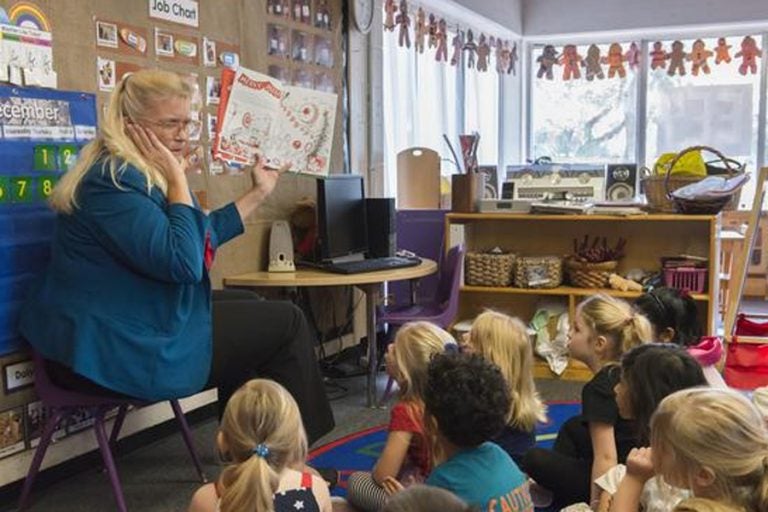You’d think that after a half century the Grinch would remember his lesson.
But every year since the December 1966 television special How the Grinch Stole Christmas! first appeared, the animated green curmudgeon returns to his old tricks of sabotaging the holiday once again.
“Basic human nature does not change,” said Jo Anne Adams, an expert animator and instructor in UCF’s School of Visual Arts & Design. “We have to learn how to express kindness and we often have to be reminded to appreciate that which is intangible…It’s a basic lesson in life to place yourself in the shoes of another so you understand how your actions affect them.”
The show will celebrate its 50th anniversary Dec. 18, and Adams said she’s watched it nearly every season since it premiered when she was 5. This year it is being broadcast several times by different networks through the holidays, and UCF’s Creative School is reading the story to preschoolers this week.
Theodor Seuss Geisel – Dr. Seuss – published the book classic in 1957 about how the Grinch tried to ruin Christmas in Whoville by stealing all the presents, toys, trees, stockings and lights before he ultimately discovered the Christmas spirit and redeemed himself with the townsfolk.
“The Grinch teaches us that the power of Christmas is not external but internal,” Adams said. “If you chose to believe the Christmas spirit is artificial you will not be able to trust it. If you open your heart to the kindness of others you will be able to reflect that kindness back.”
The lasting success of the film is not only in the story itself, but also in the talent that put the animation together.
Legendary animator Chuck Jones (creator of Wile E. Coyote, Road Runner, Pepé Le Pew and others) directed the special that was narrated by horror movie star Boris Karloff and accompanied with Geisel lyrics sung by Thurl Ravenscroft (original voice of Kellogg’s Tony the Tiger).
“The flat graphic design relies on line, shape and highly saturated color. Change in the flat sky hue serves as a strong visual cue for major emotional content as the story progresses,” said Adams, who teaches character animation specialization, a two-year program that covers how to write, storyboard, research, design and execute 3-D animated shorts. Previously she was an artist at Walt Disney Feature Animation-Florida and worked on The Little Mermaid, The Lion King, Pocahontas and other films.
Many people relate to the Grinch story, she said, because the seasonal gift-giving sometimes is overwhelming – until the realization sets in that the season is bright because of goodwill toward each other rather than the commercialization.
“The problem is perennial. We all get caught up in the need to meet expectations of gift exchange,” she said. “We have our colleagues at work, our mail person, our cousin’s cousin. I know when I fill out my gift list I think about who I feel I should remember and what the appropriate gift should be, usually attached to personal connection and dollar amount. There’s a social expectation.”
But still, she said, she strives to be like the residents of Whoville, who learned to celebrate the season without all the shiny trappings that were missing.
“I read many of the Dr. Seuss books to my children when they were small. My granddaughter will be receiving her first copy of the Dr. Seuss’ Grinch from me this Christmas,” Adams said.
“It’s my goal to be one of them [Whoville residents]. We all have aspects of both the Grinch and Cindy Lou Who. The book and animation are reminders to focus on what makes us genuinely happy.”
As from the story’s closing lines:
“Christmas day will always be
just as long as we have we.”
The remaining scheduled broadcasts this season of How the Grinch Stole Christmas! are 8 and 8:30 p.m. Dec. 14 on TNT, and 8 p.m. Dec. 23 on NBC.
